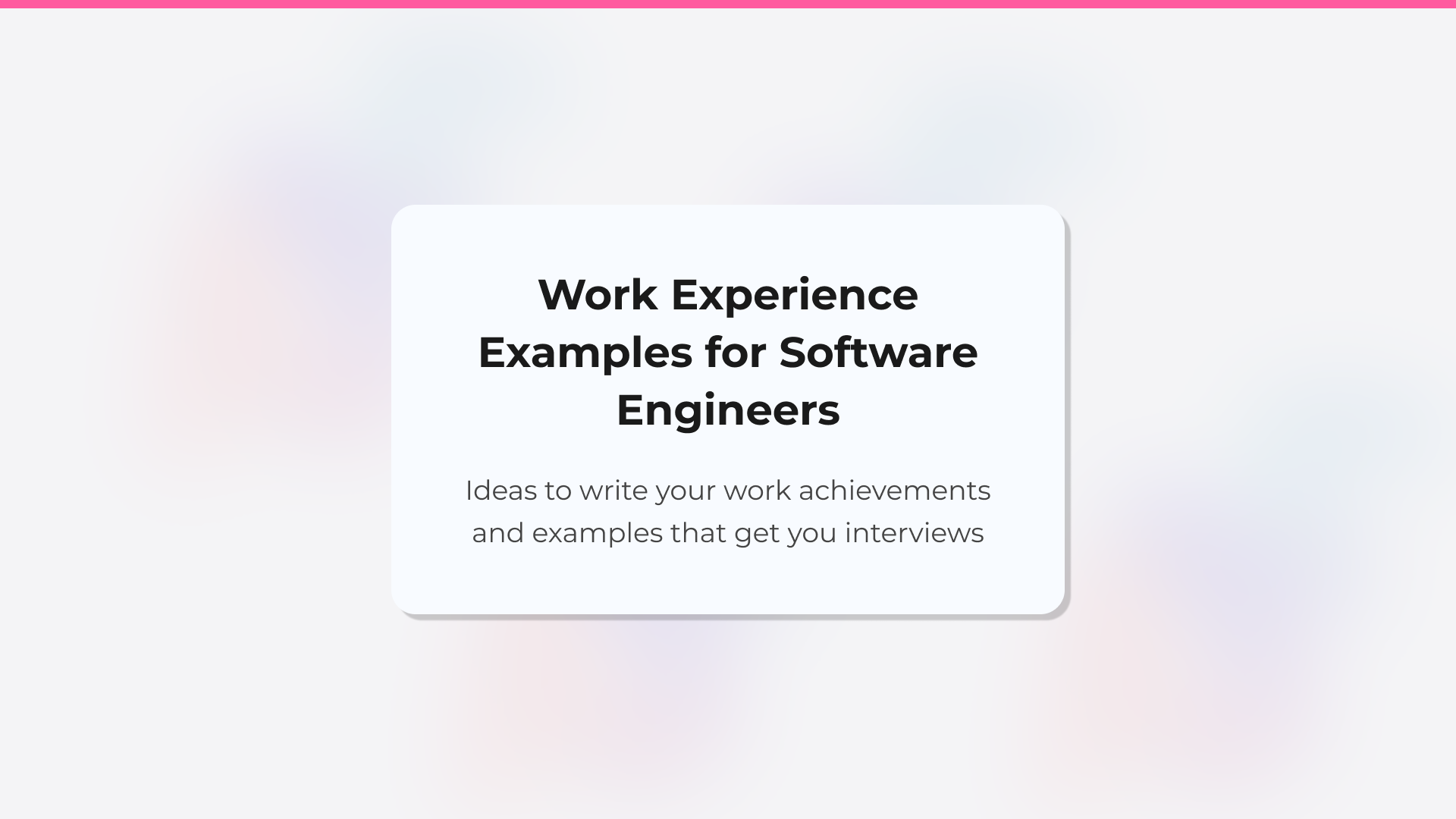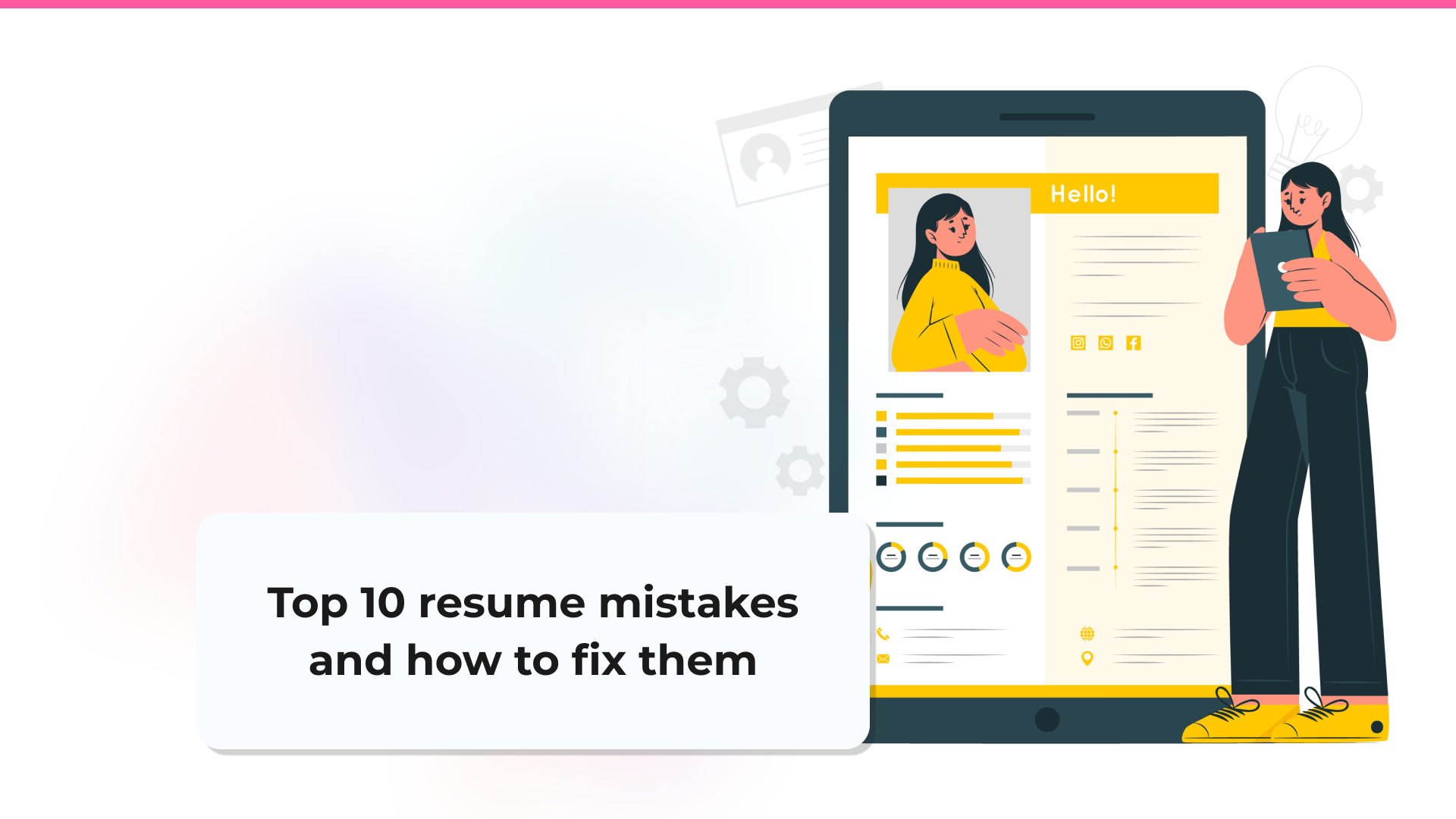
Top 10 resume mistakes to avoid in 2025 and how to fix them
Job hunting in 2025 looks nothing like it did a decade ago. Digital tools, artificial intelligence, and a whole new set of expectations (from both employers and job seekers) have completely changed the rules of the game.
It’s no longer enough to have experience or a degree. You need to know how to show it in digital environments, understand how ATS (Applicant Tracking Systems) filter applications, and adapt to a job market that rewards agility, continuous learning, and a strong personal brand. Technology has sped up the hiring process, but it has also raised the bar for what recruiters expect from a resume. You’re now competing with global candidates, often without speaking to a human until the very last stages.
And yet, despite all the changes, your resume is still the first filter in most hiring processes.
It might sound contradictory, especially in a market where 74% of companies state they are struggling to find the skilled talent they need, but competition has never been tougher. Job openings fill up with applicants in a matter of hours. And companies are after practical skills, a mindset for lifelong learning and the right attitude. The problem for most candidates is that their resumes fail to show any of that.
In this article, you’ll find:
- The 10 most common resume mistakes in 2025, including:
- Mistake 1: Unprofessional or incorrect contact details.
- Mistake 2: Writing a generic professional summary.
- Mistake 3: Listing responsibilities without showing impact.
- Mistake 4: Including irrelevant information.
- Mistake 5: Skipping personal or volunteer projects.
- Mistake 6: Making your resume too long.
- Mistake 7: Using a resume template that’s not ATS-friendly.
- Mistake 8: Writing in the third person.
- Mistake 9: Typos and spelling errors.
- Mistake 10: Not tailoring your resume to the job or company.
- Real examples and practical solutions for each one, applicable across industries.
- A summary table with each mistake, its impact, and how to fix it.
A strong resume comes from understanding the rules of the game.
Mistake 1: Unprofessional or incorrect contact details
Imagine a recruiter wants to call you for an interview, but the phone number on your resume isn’t yours. Or they see your email address and decide not to bother reaching out at all.
rockstar_88@outlook.com
It might seem like a small thing, but 58% of recruiters have rejected candidates due to sloppy or unprofessional contact details (CareerBuilder). This is one of the most basic and damaging resume mistakes, and it happens more often than you’d think. If you mess up here, the message you’re sending is simple: you don’t pay attention to the most basic details.
Before you hit send, double-check that your personal info is:
- Written correctly and fully up to date.
- Using a professional, neutral email address (ideally based on your real name). Skip the nicknames, random numbers or personal references.
- Including your complete phone number with country code if you’re applying internationally.
- Featuring a clean LinkedIn URL, if you include it. Customize the URL from your profile settings to remove all the random characters (it looks far more polished).
Use a simple format like firstname.lastname@email.com. And always include the international dialing code when applying abroad.
Mistake 2: Writing a generic professional summary
“Looking for a challenging position in a company where I can grow professionally.”
Recruiters have read this sentence a thousand times.
A summary like that says absolutely nothing. It could belong to anyone, applying for any role, in any industry. And that’s exactly what you don’t want: to seem interchangeable.
Your summary is one of the first things people read. It’s your chance to say: Here’s who I am, what I bring to the table, and why you should hire me. When you go for vague, empty phrases, you’re wasting precious space and showing a lack of direction, clarity and effort.
A strong professional summary should answer three simple questions:
- Who are you and what do you do best? (Think experience, specialization)
- What kind of impact have you made or can you make?
- How do you align with what the company is looking for? (Use their language and job-specific keywords)
If you only had two sentences to convince a recruiter to interview you, that’s your summary.
Mistake 3: Listing responsibilities without showing impact.
“Managed social media accounts.”
“Handled customer service.”
These types of bullet points alone seriously undervalue your experience. They don’t explain what you did, how you did it, or what results you achieved.
In the past, companies hired based on duties. Today, they hire for impact. They want to know whether you can get results, either because you’ve done it before or because you clearly understand how to add value.
| ❌ Generic Task | ✅ Quantified Impact |
| “Managed social media.” | “Created an Instagram content strategy that boosted followers by 300% in 4 months.” |
| “Sales associate in retail store.” | “Exceeded monthly sales goals by 125% for 10 consecutive months.” |
| “Wrote blog articles.” | “Wrote 24 SEO-optimized articles that increased organic traffic by 80%.” |
Turn job duties into achievements. Start with an action verb, explain what you did, quantify the result, and add context or business impact.
Example:
“Implemented lead tracking system that cut response time by 45% and doubled conversion rates in three months.”
If you don’t have numbers or cannot use them, you can still show qualitative impact:
“Improved the onboarding experience by helping reduce the most common pain points for new hires.”
Reframing your experience around results is a powerful way to reposition your career narrative. It shows you get what businesses care about, and that changes everything.
Check out our full guide on how to write the experience section of your resume and highlight your achievements.
Mistake 4: Including irrelevant information on your resume
If you worked as a waiter in 2009 but are now applying for a data analyst role, that experience doesn’t really help your case, it just takes up space. And yet, stuffing a resume with everything you’ve ever done is one of the most common mistakes out there.
There’s an emotional side to this. Every job meant something to you. It taught you things, shaped who you are. Removing it can feel like erasing part of your story. But a resume isn’t a tribute to your past. The more irrelevant content you include, the harder it is for recruiters to spot what actually matters. And if they have to dig to find your value, chances are they won’t.
So for every line on your resume, ask yourself: Does this bring me closer to an interview? or is it just filling space?
| ✅ Keep This | ❌ Cut This |
| Experience that’s relevant to the role | Jobs with no real connection to the field you’re targeting |
| Projects that show transferable skills (like leadership, analysis, communication) | Tasks that had no real impact or learning value |
| Recent achievements with clear outcomes | Generic task descriptions that add little to your story |
Relevant doesn’t mean “same job” or “same industry.” A past job can still matter if it supports a core skill. For example, that waiter experience can be helpful in a sales role if you highlight your customer-facing skills.
Mistake 5: Skipping personal or volunteer projects
Don’t treat your resume as just a list of paid jobs, think of it as a reflection of who you are as a professional. In a market where initiative, curiosity, and social responsibility matter more than ever, leaving out personal projects or volunteer experience can be a big strategic miss (especially if you don’t have much formal work history).
Starting a blog, learning to code on your own, organizing a local charity event… these aren’t just hobbies. They show drive, curiosity and valuable skills. They show you do things because you care, not just because you’re paid to. These projects can be the reason a junior profile stands out in a crowded field.
If you have them, don’t hide them. Create a dedicated section called “Personal Projects” or “Relevant Initiatives” and use the same structure as your work experience: focus on achievements, tools, impact and metrics.
Mistake 6: Making your resume too long
There’s a fine line between showing your experience and overwhelming the reader. Many candidates fall into the “more is better” trap and end up with resumes that are three, four, even five pages long, filled with every job and detail, whether relevant or not.
This happens a lot when using generic templates like Europass CV, which tend to inflate content with unnecessary text blocks.
But your resume isn’t supposed to tell your entire career story. It should only highlight the part that proves you’re ready for this next opportunity. A strong resume is a sign of good judgment. It shows you understand what the market is looking for.
With each line, ask:
- Does this role directly support the one I’m applying for?
- Is this training or certification still relevant or outdated?
- Am I adding this because it adds value or just because I’m afraid it’ll look like I’ve done too little?
Here’s how to create a focused one- or two-page resume that opens more doors than a five-page one ever could.
Mistake 7: Using a resume template that’s not ATS-friendly
It’s tempting to pick a flashy template with bold colors, skill bars, icons and decorative fonts because you want your resume to stand out. You want that “wow, what a nice layout” moment. But in the hiring world, that “nice” can quickly turn into “unreadable.”
Many templates out there aren’t built for how resumes are actually read by humans and ATS. Most companies now use Applicant Tracking Systems, which scan resumes and sort candidates automatically. But ATS tools don’t “see” what you see. They can’t read icons, they struggle with graphics and decorative fonts, and they often misinterpret key details like your experience or skills when the layout doesn’t read well top-to-bottom, left-to-right.
And even if your resume makes it through the ATS, a cluttered design can still hurt you with real people. Think about the person reviewing your application: busy, skimming dozens of resumes, looking for value fast. If your layout is confusing, your font is hard to read, or there’s no breathing room on the page, they might give up before they even start.
That doesn’t mean your resume has to be dull. You can look sharp without sacrificing clarity. Smart use of spacing, clean fonts, a touch of color, and a clear hierarchy will show maturity, professionalism, and great taste without losing effectiveness. See the Harvard or Jake’s resume templates.
Make it easy for the reader (ATS or human) to scan your resume and spot your value in seconds. Here are 3 resume templates that actually get interviews.
Mistake 8: Writing in the third person
“Juan is a results-oriented professional with over 10 years of experience leading teams…”
Some people think writing in the third person sounds more professional or serious. But when recruiters read resumes written like this, the tone comes across as cold, distant, even robotic. And that’s the exact opposite of what a great resume should convey: clarity, connection and authenticity.
It’s your resume. Own it. Use clear, direct, first-person implied language without the pronouns. It’s sharper, more engaging and more aligned with modern hiring expectations.
Mistake 9: Typos and spelling errors
You’ve spent hours crafting your resume: choosing the right words, tailoring your experience to the job, highlighting measurable achievements. But then one small typo sneaks in:
“Coordinated a marekting team of four people…”
According to CareerBuilder, 59% of recruiters automatically reject resumes with spelling mistakes. Not because they’re being picky, but because typos signal a lack of attention to detail and overall quality.
When a recruiter is reviewing hundreds of resumes, they look for signs of quality and professionalism. And in roles where written communication is key, like marketing, administration, legal, sales or customer support; a typo is a red flag.
Share your resume as a link instead of an attachment. That way, if you spot a mistake after sending it, you can fix it instantly without having to resend an updated file and draw attention to the error.
👉🏼 With CandyCV, you can share your resume as a PDF or a personal link, like your own mini-website.
Mistake 10: Not tailoring your resume to the job or company.
You’ve polished your resume, reviewed every section, and you’re happy with how it looks. So you start applying. A fintech company. A mobility startup. An international bank. An Ed-Tech SaaS. You send out the same version to every job that seems remotely interesting to you.
But when recruiters get a generic resume, they instantly assume a few things:
- You didn’t research the company.
- You don’t really understand the role.
- You’re not genuinely interested in the opportunity.
That doesn’t mean you’re automatically disqualified. But it absolutely weakens your application, especially compared to candidates who took the time to align their resume with the company’s goals and language.
Tailoring doesn’t mean rewriting your entire resume from scratch. It means putting the right details in the spotlight. And when you focus on quality (not quantity), it’s easier than it sounds:
- Rewrite your summary to highlight 2–3 skills or achievements directly tied to the job posting.
- Reorder bullet points so the most relevant accomplishments are listed first.
- Use the same keywords and phrasing as the job ad (e.g., if they say “stakeholder management,” use that term).
Organize your resume in duplicated versions. That way, you can quickly adapt it and boost your chances. Tailored resumes are 140% more likely to get a callback.
Summary Table: The 10 most common resume mistakes in 2025
| Common Mistake | Negative Impact | How to Avoid It |
| Unprofessional or incorrect contact information | Makes it harder to reach you. Signals carelessness and lack of attention to detail. | Double-check your phone number and email. Add country code if applying internationally. |
| Using a generic professional summary | Fails to show motivation or alignment with the role. Feels low-effort. | Write a clear, tailored summary focused on your strengths and the job’s keywords. |
| Listing responsibilities without showing impact | Doesn’t highlight your value. Makes your experience sound flat and forgettable. | Use action verbs and include measurable results—data, percentages, or feedback. |
| Including irrelevant information | Distracts from key qualifications. Wastes space and shows poor judgment. | Focus on experience, training, and skills that match the job. Cut what doesn’t add value. |
| Leaving out relevant personal projects or volunteer work | Misses a chance to show initiative, values, and critical soft skills. | Include a section for personal or volunteer projects. Highlight outcomes and learning. |
| Making your resume too long | Loses the recruiter’s attention. Weakens your message and value proposition. | Keep it to 1–2 pages. Focus on what matters. Prioritize key achievements. |
| Using a design that’s hard to scan (for ATS or people) | Hurts readability, looks unprofessional, and confuses resume-scanning software. | Choose a clean layout without complex graphics. Use clear fonts and simple structure. |
| Writing in the third person | Feels distant and impersonal. Reduces connection with the reader. | Use implied first person: professional, direct, and human. |
| Typos and grammar mistakes | Signals low quality. Often leads to immediate rejection. | Proofread multiple times, use spell check tools, and share via link so you can update easily. |
| Not tailoring your resume to the job or company | Doesn’t show why you fit the role or what you bring to it. | Adjust your content, structure, and keywords to match each specific job. |
Bonus: if your resume and LinkedIn don’t tell the same story, you’ve got a personal branding problem
If your resume isn’t aligned with your LinkedIn profile, your cover letter, or your general online presence, it can create confusion and mistrust.
Recruiters pay close attention to the consistency across all your professional touchpoints. A strong personal narrative sends three powerful signals:
- Consistency (everything fits together).
- Authenticity (you sound like you, not a cliché).
- Growth (your evolution is clear).
When your whole professional ecosystem tells the same story with clarity and intention, you don’t just look polished. You build trust. And trust gets you interviews.
Avoiding these mistakes is easy with CandyCV
When you build your resume with CandyCV, you don’t just get a polished PDF, you also get a shareable link. That means if you spot a mistake after sending it, you can fix it instantly. No awkward follow-up emails. No reattaching updated files.
Whoever clicks your resume link always sees the latest version even if you sent it days ago.
We're two product builders who care about quality, taste and doing things right. We want you to get that job you want, plain and simple. That's why we are building CandyCV to help you create a great resume and land a job for free. If you give us a try (and feedback!), we'll be forever grateful 😊
Alba Hornero
Co-founder and Product Builder
As CandyCV’s co-founder and a former product lead in HR tech, I’ve built ATS tools, optimized hiring processes, and interviewed hundreds of recruiters. I personally write every post with the intention to provide real, high-impact job search advice that truly helps you land your next role.
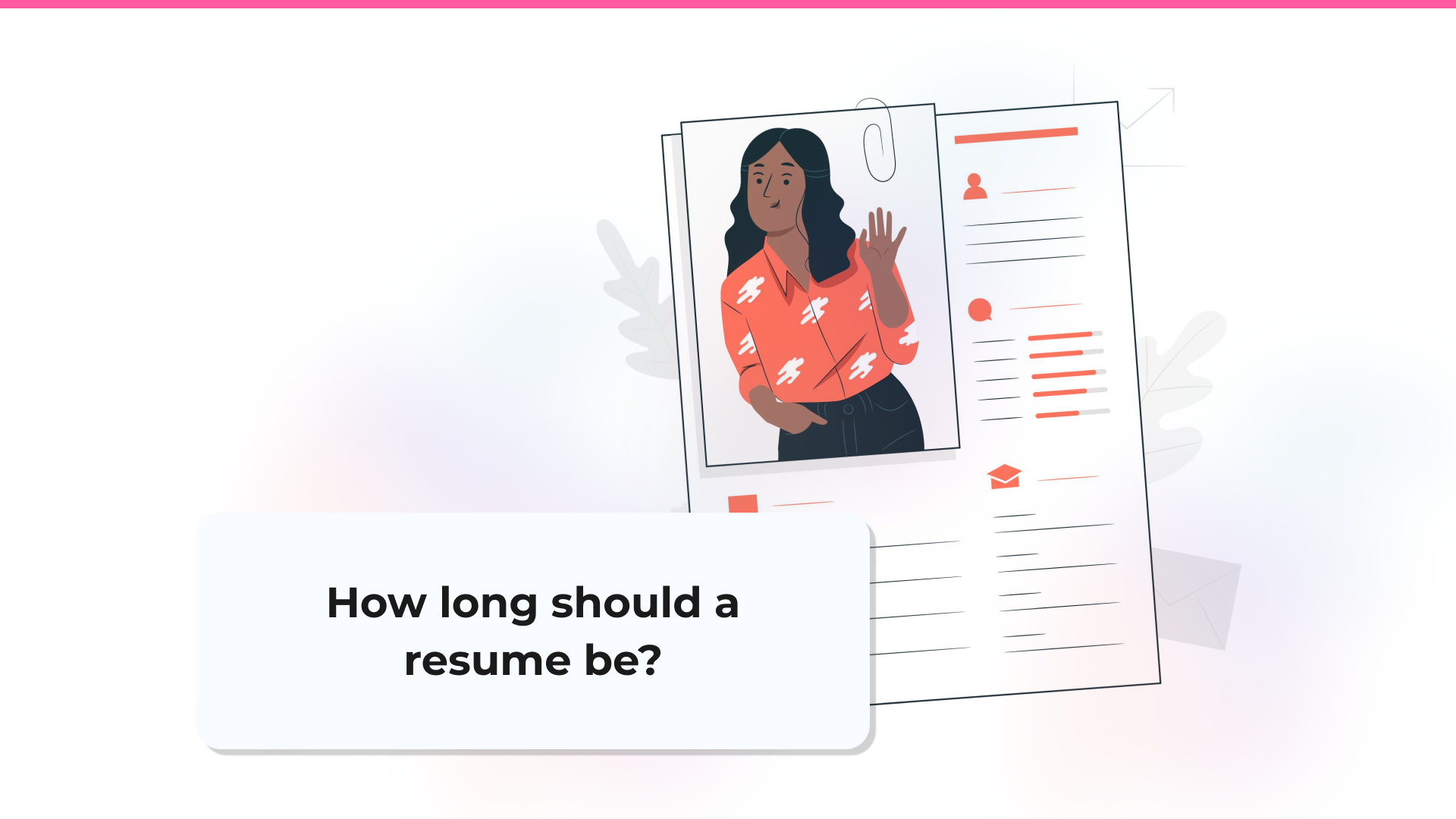
How long should a resume be? Guide to getting more interviews
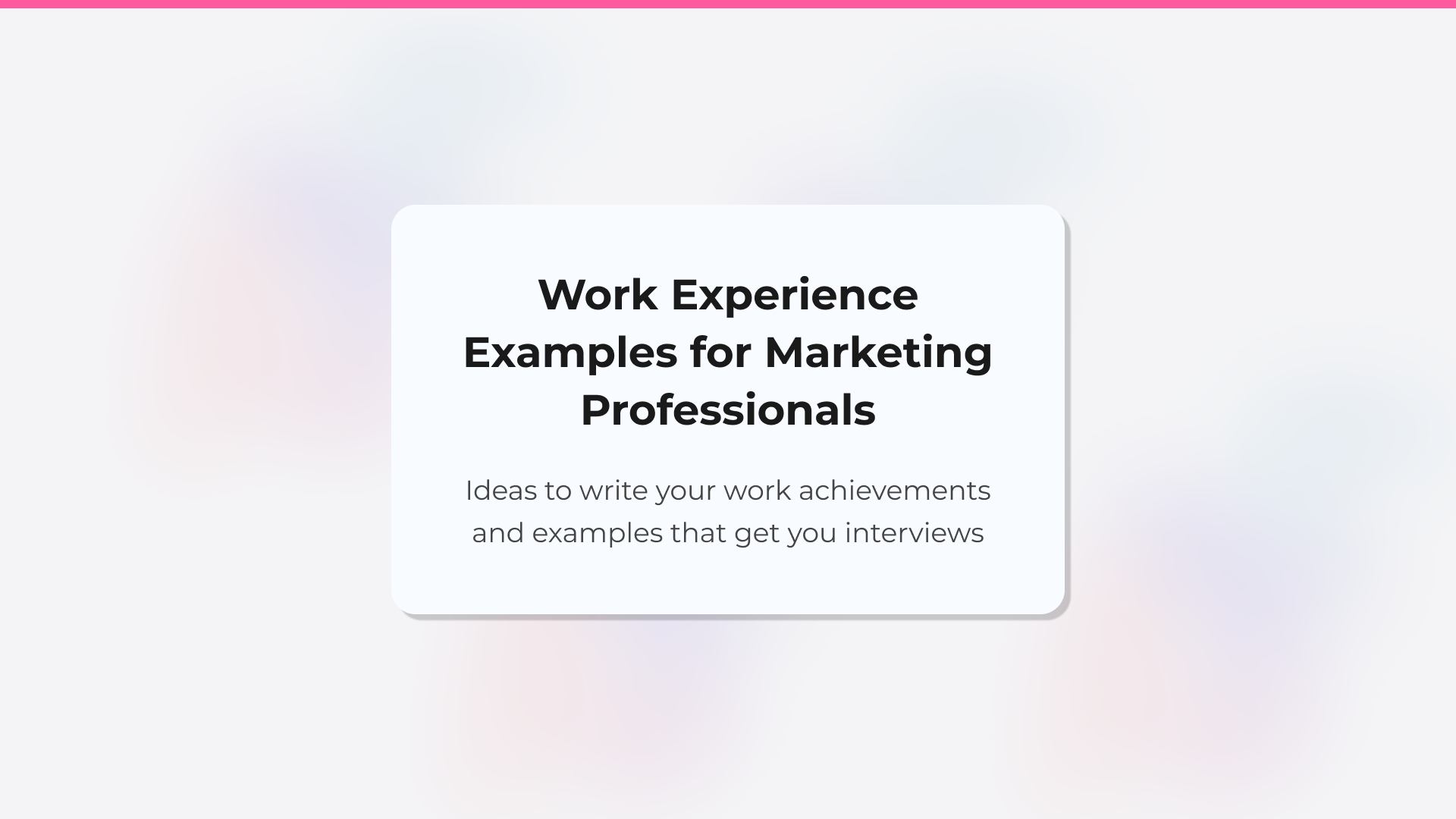
Examples of how to describe your work experience in a Digital Marketing resume

How to list Education and Certifications on your resume (with examples)
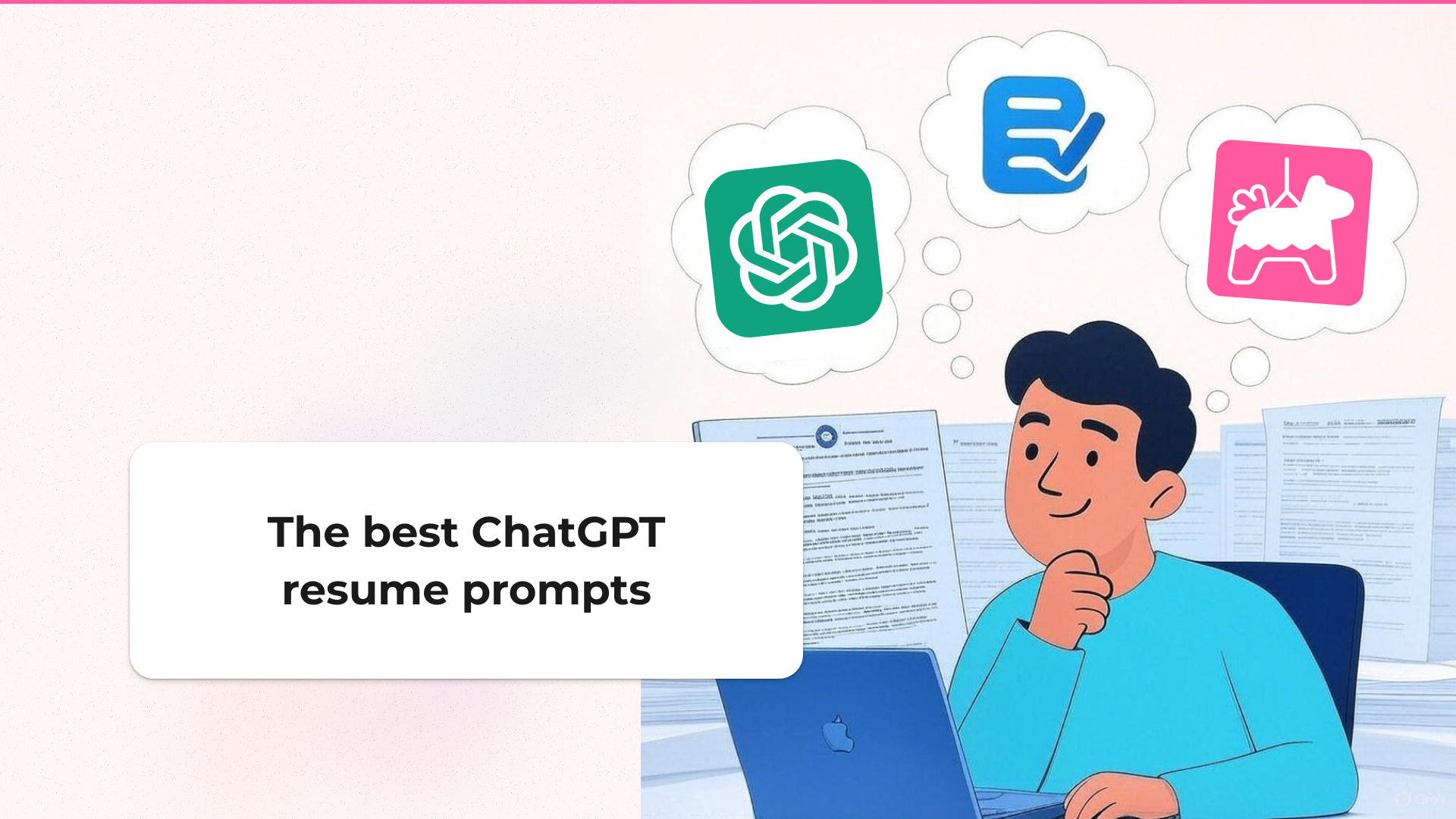
Best 3 ChatGPT prompts for your resume: use AI to get the job you want
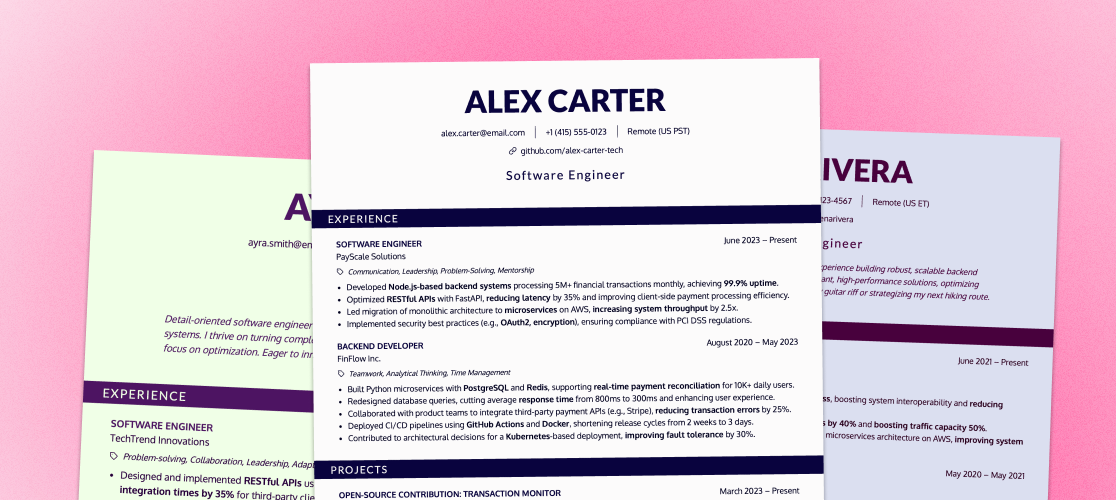
Harvard and Jake’s Resume Templates: why their LinkedIn-like structure wins recruiter attention
